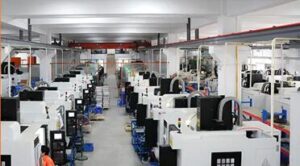Rubber molding is a versatile manufacturing process that can produce a wide range of products, from simple seals and gaskets to complex automotive parts. It is a cost-effective method that offers high precision and accuracy, making it a popular choice for many industries.
There are three main types of rubber molding: injection, compression, and transfer molding. Each method has its benefits and ideal applications. Therefore, understanding them will help you choose the right one for your project.
In the following sections, we will explore the different types of rubber molding in more detail. You’ll learn the different samples of injection molded rubber parts and their applications. We’ll also give you tips on choosing the most suitable technique for your needs.
What’s Rubber Molding?
Rubber molding is a key manufacturing process that turns uncured rubber into durable, versatile parts tailored to diverse applications. This technique is integral to producing components with precision, capable of forming complex shapes and designs with outstanding durability. Its efficiency in mass production minimizes waste and ensures consistent quality, making it a cost-effective option for industries. The inherent resistance of rubber to harsh conditions, including extreme temperatures and corrosion, further elevates its value in demanding applications.
Moreover, the adaptability of rubber molding allows for extensive customization in rubber compounds, meeting specific performance requirements. This aspect is crucial in sectors where precision and material resilience are paramount, such as automotive and healthcare. As a result, rubber molding stands out as an indispensable process in the production landscape, providing robust, reliable, and tailored solutions that significantly enhance product performance and longevity.

How to Create Rubber Components
Suppose you are looking to produce a rubber product in large quantities. In that case, rubber molding is an efficient and cost-effective way to do it. Here are the basic steps involved:
Design the Mold
The first step is designing the mold. The mold will determine the shape and size of the end product. It is typically made of metal and can be designed to produce a single part or multiple parts at once. The design of the mold will depend on the product’s intended use, and it may include features such as ridges, holes, or other shapes.
When designing it, there are several considerations that you need to take into account.
- Material Selection: Choose a material suitable for the type of rubber you will be molding. The material should be able to withstand the high temperatures and pressures that are involved in the molding process.
- Part and Mold Design: The part’s design influences both mold construction and the molding process. Ensure compatibility with the selected rubber and molding technique. The mold should be designed to yield the desired part dimensions and shape.
- Venting: Venting is the process of allowing air to escape from the mold during the molding process. If air does not escape, it can cause defects in the product. Make sure your mold is adequately vented to prevent these defects from occurring.
- Cooling: Inappropriately cooled parts can end up with defects. So, you must consider cooling when creating the mold.
Create the Mold
After designing, create the mold via CNC machining, 3D printing, or casting, depending on complexity and detail. Clean and prepare the mold for fabrication, which involves multiple steps to produce high-quality rubber molds.
- Creating the Mold Core and Cavity: Create the mold core and cavity from materials like steel or aluminum for the internal and external shaping of the rubber part.
- Machining the Mold: Precision machine the mold using CNC to meet exact specifications.
- Polishing the Mold: Polish the mold to eliminate any rough edges or imperfections, ensuring a smooth surface for the rubber part.
- Assembling the Mold: Assemble all mold parts, including ejector pins and cooling channels, to finalize the mold for use.
Vulcanization in Rubber Molding
Vulcanization chemically bonds rubber molecules through heat and pressure, enhancing durability and stability. In this process, the rubber cross-links in a mold, creating a robust three-dimensional molecular network.
Various methods can be employed, including compression, transfer, and injection molding. Compression suits large, flat, or uniquely shaped parts, transfer molding is optimal for small, intricate components, and injection molding excels in creating complex shapes with tight tolerances. Each technique ensures the rubber achieves its characteristic strength and resilience, tailored to specific manufacturing needs.
Different Types of Rubber Molding Process
Rubber molding is a diverse manufacturing method with lots of variants. Each type has its own specialized production procedure, advantages, and disadvantages. We will present a detailed summary of the most well-known ones: injection molding, compression molding, and transfer molding.
#1 Rubber Injection Molding
Rubber injection molding is very similar to the more well-known plastic injection molding process. It starts with the uncured rubber strips that go into the machine via a hopper. Once through the hopper, it enters the screw chamber, where it is heated and compressed by external heaters and friction from the movement of the screw.
Near the end of the screw, the rubber has heated to a very fluidic state. It is fed into the mold at high pressure and it fills up the cavity built inside the rubber mold. Due to its flow properties, the rubber material fills every nook and cranny of the cavity.
The mold then gradually cools down so the rubber solidifies. Finally, the mold opens to eject the end product, after which it is ready for the next cycle.


